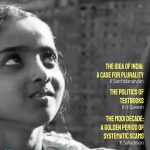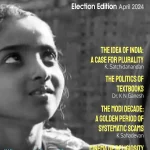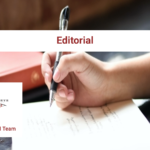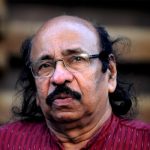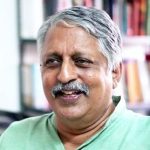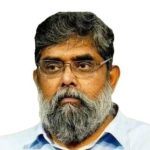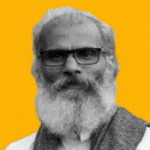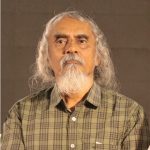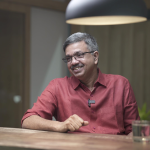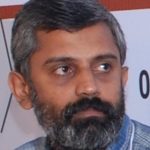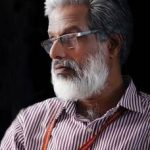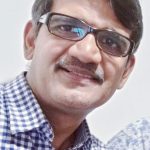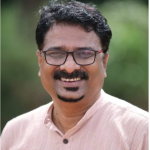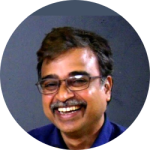

Suresh Kodoor
Nation-state is a modern European construct that defines a geographical entity as a sovereign nation where the population is bound together by a strong common thread, including common language, history, ethnicity, religion, culture, myths, etc. As per this modern construct, India cannot be termed as a ‘nation-state’. India is rather a union of many diverse cultures and communities, many of which may qualify to be recognized as a ‘nation’ on their own. However, India is neither a mechanical tying together of communities that are totally alien to one another and completely disconnected with no common linkage. There is certainly an underlying strong common cultural heritage, including several common myths, legends, traditions, rituals, beliefs, etc., evolved and established over time, that these diverse communities share and are organically linked to while still maintaining their own distinct identities. Thus, India is a unique nation-state where numerous distinct civilizations co-exist peacefully while preserving and adhering closely to their social and cultural identities. It is this recognition of India’s plurality along with the rights and liberty established constitutionally to facilitate and protect such co-existence that forms the core of the ‘Idea of India’. There is no India without recognizing her plurality and there is no India either without voluntarily subsuming these diversities to a larger entity called India. The quasi-federal structure India has adopted, which presumes mutual respect between the parts and the whole and between the parts themselves, is a reflection, recognition, and institutionalization of this reality and is an apt model to ensure India exists and prosper as a strong union of states. Such a federal structure recognized the existence of several political formations that would represent the aspirations and rights of many diverse groups. It is this strong foundation and platform laid by the constitution that enabled India to emerge as a strong democratic nation from a collection of scattered warring groups of 565 distinct princely states that existed when the country attained independence.
However, recent attempts to unilaterally push the ‘one-ness’ agenda through various means and on multiple fronts have raised serious challenges to this carefully orchestrated and protected federal structure of the country and are becoming detrimental to the preservation of our country’s diversity and underlying unity. The motive behind the push towards ‘one-ness’ is to create a narrative that India has always been a monolithic ‘Hindu’ civilization since time immemorial and the current ‘Hindutva forces’ are the custodians and inheritors of the same. Such a narrative makes it much easier for the RSS/BJP to consolidate the large diverse population under one ‘Hindutva’ ideological umbrella, breaking the barriers of regional identities and distinct cultural affiliations, and forming a strong political base for cementing its position in power. The recent call for implementing ‘One Nation, One Election’ or ‘Simultaneous Elections’ is the latest initiative in this series of retrogressive and dangerous ‘one-ness’ campaigns aimed at establishing a cultural and political hegemony. It is a well-planned strategic initiative to make the country a unitary state with all the power concentrated at the centre, eventually dismantling the existing federal structure altogether.
The ultimate goal is to destroy democracy at the grassroots and concentrate power in the hands of one party and one leader, the grand settings for an eventual autocracy and tyranny.
RSS was never for India to be a federal state as envisaged in the Constitution of India. RSS always wished and argued for a unitary state. Golwalkar in his book ‘We or Our Nationhood Defined’ wrote, “We are one country, one society, and one nation, with a community of life-values and secular aspirations and interests; and hence it is natural that the affairs of the nation are governed through a single state of the unitary type. The present federal system generates and feeds separatist feelings. It must be remedied and the Constitution amended and cleaned to establish a Unitary Form of Government”. Golwalkar had suggested changing the constitution so that a unitary government could be established in India. The present agenda of ‘One nation, one election’ is nothing but a move to make the Golwalkar dream come true and a ploy to dismantle and destroy the country’s federal structure as BJP and RSS fear that the federal model upheld by the Constitution is a blocker for establishing a unitary system in India. Any such unilateral attempt to impose one-ness, disrespecting and undermining the vast cultural diversity, will be a gross violation of the spirit of our constitution and will only lead to destroying the unity and eventual disintegration of the nation.
Niti Aayog, the key policy-making body of the union government, defines ‘Simultaneous Elections’ as “structuring the Indian election cycle in a manner that elections to Lok Sabha and State Assemblies are synchronized together”. A voter would be able to cast his/her vote to both Lok Sabha as well as State Assembly on a single day at the same time under such an arrangement. ‘Simultaneous Elections’ does not mean that voting for Lok Sabha and all the State Assemblies across the country needs to happen on a single day. The polling can be conducted in a phased manner provided that the voters in a particular constituency vote for both State Assembly and Lok Sabha the same day. Ideally, Simultaneous Elections should imply that elections to all three tiers of constitutional institutions, including panchayat and municipal corporations, take place in a synchronized and coordinated fashion and the voters cast vote for electing members to all tiers of the Government on a single day. As it may not be practical to hold elections to all the lower bodies simultaneously, Niti Aayog has suggested including only Parliament and State Assemblies under the purview of Simultaneous Elections.
The idea of Simultaneous Elections was mooted first in the 1983 annual report of the then Election Commission. However, the proposal did not get any traction as none of the political parties, including the ruling party at the center, were interested in taking it forward then. BJP took this up as one of its major agendas at the very first opportunity itself when it assumed power at the centre though. The Law Commission under the chairmanship of Justice Jeevan Reddy proposed the idea of Simultaneous Elections in its 170th report on ‘Reform of Electoral laws’ in the year 1999 while Mr. Vajpayee was the Prime Minister. However, BJP had to wait to push this agenda forward as it lacked the required majority in the upper house of the Parliament. The question of ‘One Nation, One Election’ assumed momentum once again after the Modi government came to power in 2014 and BJP started actively pursuing it. A parliamentary committee was constituted to look into the possibilities of operationalizing the ‘One Nation, One Election’ proposal and they submitted their proposal in Dec 2015. Prime Minister Modi has been vehemently promoting this agenda since 2016 and has made it clear on several occasions and forums that he intended to take it forward. Addressing a national conference of Presiding Officers in Nov 2020, Modi said “One Nation, One Election is not only a subject of debate but a necessity for India. There is an election in India every month, which hampers development. Why should the country waste so much money?”. Subsequently, Niti Aayog submitted a detailed report on the subject in the year 2017, titled ‘Analysis of Simultaneous Elections: The What, Why and How’. Niti Aayog had suggested implementing the ‘One Nation, One Election’ plan in the 2019 Lok Sabha election itself. BJP is desperately trying to seize the present moment to push through the plan. A high-level committee on Simultaneous Elections was constituted with Ram Nath Kovind, former President of India, as the chairman in Sep 2023 to chalk out the implementation details and to speed up the process. The committee submitted its report in March 2024. The Kovind committee has recommended holding elections simultaneously to Lok Sabha and State Assemblies in the first phase and then following it up with elections to the municipal and panchayat bodies within 100 days of the general election in the second phase. The 22nd Law Commission also is expected to submit its report on the Simultaneous Elections soon and the BJP is looking to kick-start simultaneous polls starting from the 2029 Lok Sabha election cycle. While opposing the idea of Simultaneous Elections, one of the members of the high-level committee Justice Sanjib Banerjee, former Chief Justice of Madras High Court, noted that the Simultaneous Elections would undermine India’s federal structure and would be prejudicial to regional issues. Many opposition parties have rejected the idea of ‘One Nation, One Election’ citing that BJP is advocating a policy that is against the very basis of democracy and the values and principles enshrined in the Constitution of India. The way the scheme is being proposed for implementation, Simultaneous Elections would become a lethal tool in the hands of the BJP to create political instability and defections in every state and pave the way for bringing all the states under the rule of the central government. It will also gradually lead to the transition from a parliamentary system to a presidential system.
There are of course many obstacles, both constitutional and practical, to implement the idea of Simultaneous Elections. Article 83 of the Constitution defines the terms of the Lok Sabha and the Rajya Sabha. As per the constitution, the term of the Lok Sabha shall be for a period of five years from the date on which the first meeting of the House is held. The term can be extended by one year in case of emergency as per Article 83(2). The term of the State Legislative Assemblies is determined by Article 172, which is defined as five years from the date of the first meeting. Thus, the state legislative bodies exist independently as sovereign bodies, just like the Parliament, with the powers conferred on them by the Constitution. That is why the state legislatures can remain in power even if Parliament is dissolved. According to these provisions of the Constitution, the term of the state assemblies cannot be extended beyond five years (six years in case of emergency). It is possible to dissolve the Parliament under Article 85 (2) and the State Legislative Assemblies under Article 174 (2) before the expiry of the term though. This means that a constitutional amendment will be required to extend the term of the Parliament or the Legislative Assemblies to hold simultaneous elections to the Lok Sabha and the Legislative Assemblies. The term of some of the state assemblies will likely have to be extended or shortened for different periods, as the case may be, to hold simultaneous elections. Additionally, the commission suggests that adjustments may be needed in the term durations of some governing bodies to facilitate simultaneous elections, which might necessitate amendments to various laws related to electoral procedures, delimitation, and others, including the People Representation Act.
The most fundamental concern about the idea of Simultaneous Elections is that the government is approaching democracy and elections simply as issues of corporate governance and balance sheets. In a democracy, no expense is too high to ensure a government that accurately reflects the will of the people, that is willing to work according to their expectations, and above all, that is accountable to the people and has their approval, comes to power. Those who like to compare heads of government with corporate CEOs are contemptuous of democracy and give scant regard to the responsibility of the state towards its people. Such people dream of government being run by a bunch of nominated ‘professionals’ and ‘technocrats’ with no accountability to the people. Given a choice, they won’t hesitate to even brush aside elections altogether to reduce ‘expenses and increase ‘efficiency’. The statement of the CEO of Niti Aayog that ‘the increase in democracy in India is an obstacle in the development work’ shows the real mindset and attitude of such elements towards democracy and common people. It will not get far before we start hearing questions like why election once in five years, why not once in 10 or 15 years. The slogan of ‘One nation, One Election’ will spawn more such ‘ideas’ like ‘One nation, One state’, ‘One nation, One leader’, ‘One nation, One party’, ‘One nation, One religion’, ‘One nation, One language’ etc., an all-out attempt towards the amalgamation of all diversities into one. The ultimate goal is to destroy democracy at the grassroots and concentrate power in the hands of one party and one leader, the grand settings for an eventual autocracy and tyranny.
The government and the Prime Minister have been putting forward the following arguments as the reasons for moving to Simultaneous Elections:
- Model Code of Conduct imposed during the election time adversely impacts development programs, policy implementation, and other regular functioning of the government
- Frequent elections lead to massive expenditures for the Government
- The deployment of security forces for elections increases their workload
- Elections often lead to caste and religious tensions in society
- Frequent elections disrupt the daily lives of citizens
The Parliament Standing Committee in its 79th report says, “…The imposition of the Model Code of Conduct (MCC) puts on hold the entire development program and activities of the Union and State Governments in the poll-bound State. It even affects the normal governance. Frequent elections lead to the imposition of MCC over prolonged periods. This often leads to policy paralysis and governance deficit”.
Democracy becomes meaningful only when the people have the right and opportunity to choose their destiny. Democracy is not confined to elections alone, rather is a way of life and an internalized mindset of mutual respect, acceptance, and cooperation that people display in all aspects of their social life. In a meaningful democratic system, participation in the electoral process to determine one’s government is the most fundamental right of the citizen. Any act that violates or denies this right will lead to the weakening of democracy. It is the democratic right of the people to have a government that recognizes their needs and aspirations and strives to fulfil them. Being able to oust a government that has lost the trust of the people also is very much part of the same right. As we do not have a system yet that provides people the right to recall their elected representatives, elections would be the next best option that offers them an opportunity to defeat the representative they do not approve of. Elections, both for Lok Sabha as well as State Assemblies, are also opportunities for people to express their disagreement with the government’s policies. People will be robbed of this opportunity if the governments are given a fixed five-year assured term. The parties in power may even treat it as a license to rule as per their wishes for five years without giving any regard to the sentiments of the people. Therefore, the political parties should consider various elections held in the country from time to time as barometers to measure the mood of the people, not as an unnecessary expense or impediment to governance.
Even a cursory glance at these reasons, being cited by the Prime Minister and the Government, for switching to Simultaneous Elections would reveal that they are hardly anything serious or factual that demands such a drastic overhaul in our existing electoral process. For instance, according to a Niti Aayog’s report, the central government’s expenditure on conducting Lok Sabha elections has increased from Rs.1115cr in 2009 to Rs.3870cr in 2014. The cost for the State Assembly election is estimated to be around Rs.300cr. This certainly is not a huge amount and cannot be considered an exorbitant expenditure on the government for conducting elections, which is the basic process of democracy. In a country that spends thousands of crores even to install statues and build temples, this is hardly any expense when it comes to a vital democratic process. It is also ironic that the same party that has been spending hundreds of crores to buy people representatives and to play resort politics and ‘operation lotus’, indulging shamelessly in sabotaging people’s mandates in various states, is the one raising concerns about poll expenses. It is also an open secret that political parties spend many times more than these official figures. According to unofficial estimates, around Rs.50000-60000cr is being spent by various political parties for elections. Therefore, increased election expenditure of the central government is not at all a reason to deny the people their democratic right to elect their government.
The argument that the announcement of the model code of conduct hampers development work and governance is not even worth consideration. To begin with, the code of conduct only prevents the announcement of new schemes during the election process. It does not interfere with ongoing projects. As far as a specific state is concerned, the provisions of the code of conduct come into force only at the time of the Lok Sabha elections or at the time of the assembly elections in that state. This is only a small part of a state government’s tenure. It would sound very farcical if any political party claimed that they are not able to carry out development work due to the election-related model code of conduct. It is even possible to reduce the duration of the code of conduct and revise its scope if all the parties collectively discuss and arrive at the required consensus. Therefore, it is quite silly to project the ‘model code of conduct’ as a reason to implement Simultaneous Elections.
Arguments like elections causing inconvenience to people’s normal lives are quite trivial and irrelevant. Bodies like Niti Aayog and Parliamentary committees citing such silly reasons only demonstrate a complete lack of serious deliberations and logical thinking on the topic. Another reason cited is that elections lead to caste and religious riots in society. We can only sympathize with them when a party that is at the forefront of practicing politics of communal divide and hatred cites religious tensions as a ground for not holding elections. Thus, it is obvious that none of the arguments being raised by the Government for switching to Simultaneous Elections is anything serious and hence the real motive must be something else.
The biggest impediment to consolidating the mass under one created identity of ‘Hindutva’ is the existence of several strong regional identities. Hindutva communal forces are concerned that the strong presence of local cultures and sub-nationalities would be an obstacle to establishing their totalitarian rule and cultural hegemony all over India. BJP wants to carve out a strong political powerbase by consolidating every ‘Hindu’ under a distinct ‘Hindutva’ identity. The ‘Hindi-Hindu-Hindustan’ slogan is a manifestation of this ideological and political strategy. Any other identities based on region, ethnicity, language, etc. will act as a counterforce to this project. If the regional identities and their political movements become stronger, people will rally around such political parties to give voice to their aspirations. This will be suicidal for the BJP and hence they would go all out to weaken and eventually dismantle the existing federal structure that empowers regional parties and governments.
When elections are held simultaneously to the Lok Sabha and state assemblies, the national parties would end up getting more attention and importance than the regional parties. Moreover, the regional parties will find it difficult to compete with the ruling national parties in terms of power and resources. The electoral bond scam exposed how the ruling national party has grabbed the lion’s share of resources by leveraging its power, leaving a pittance for regional parties and those who are not in power. When an election is held to a state assembly along with a parliament election, national issues tend to dominate the discourse over local issues. The importance and focus given to national issues will naturally create a conducive atmosphere for national parties. Many studies have shown that when elections to the Lok Sabha and State Assemblies are held together, voters generally prefer to vote for the same party in the assembly as they voted for the Lok Sabha and this hugely favors national parties. We have witnessed in 2019 how the election debates get ‘hijacked’ by discussions about threats to the territorial integrity of the nation following an external attack on the soil. Such an uneven playing field would eventually lead to power getting concentrated in the hands of the national parties and the regional parties losing their importance and relevance. The cultural and linguistic diversity that enriches the nation’s political landscape would gradually lose its voice in national politics. This trend threatens to undermine federalism, thereby weakening the fabric of India’s democracy, and eventually transforming India into a unitary state. It is thus critical that the agenda of Simultaneous Elections is opposed and defeated at all costs.
Suresh Kodoor is an executive management and engineering professional, entrepreneur and a former scientist at Bhabha Atomic Research Center with over three decades of industry experience across USA, Europe and India. Suresh is currently serving as the Director for Academia Industry Relations at Amrita University. Academically, Suresh holds a bachelor’s honors degree in electrical engineering, a post-graduation in nuclear engineering, and master’s in computer science. Suresh is also a published author, speaker, and an activist involved with socio-cultural and science popularization initiatives and movements.
Coordinates: Email: sureshkodoor@gmail.com Ph: 9845853362

